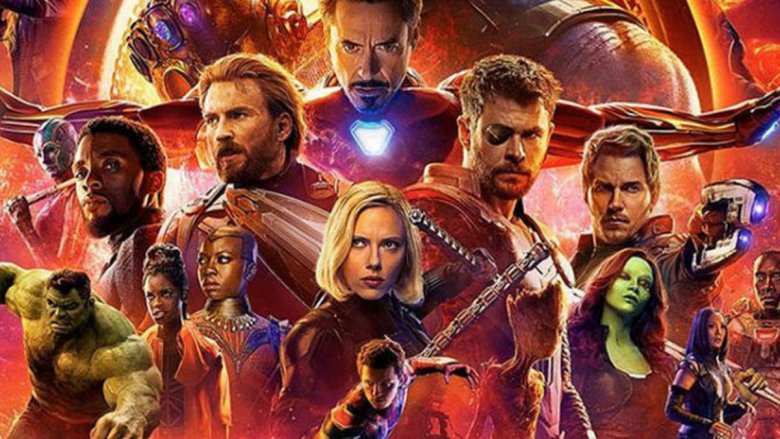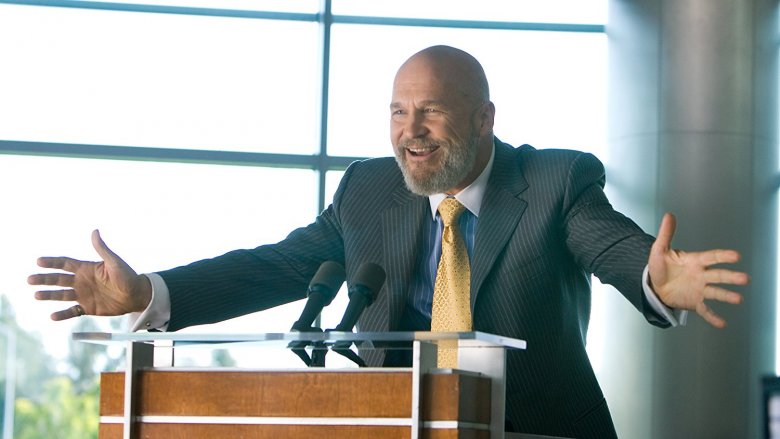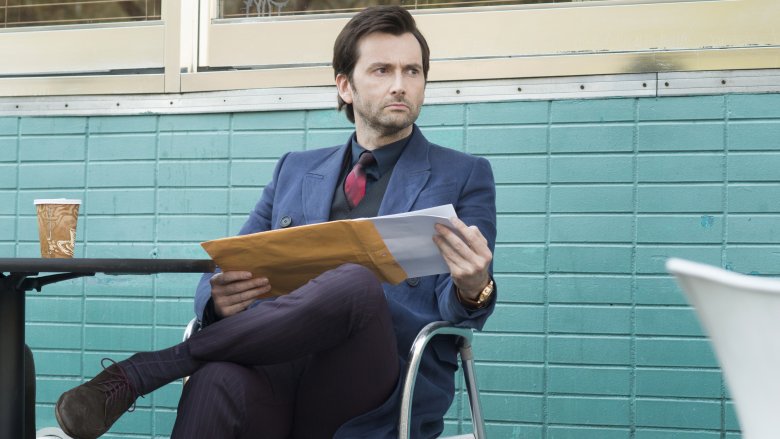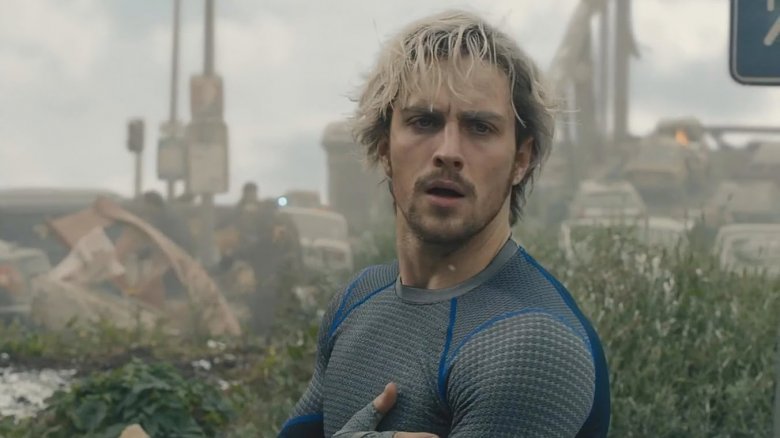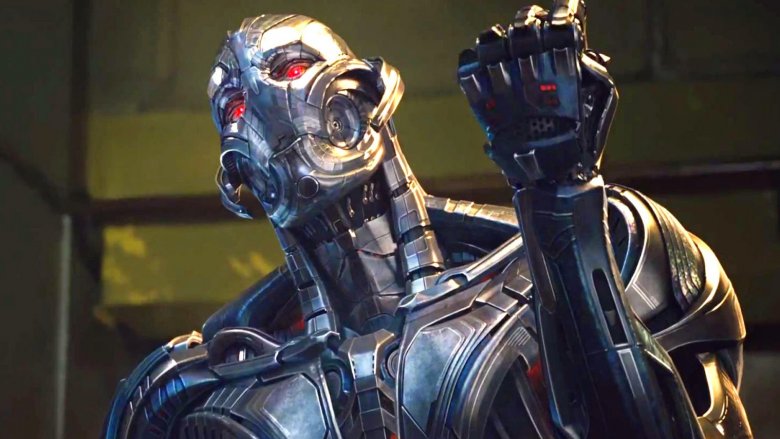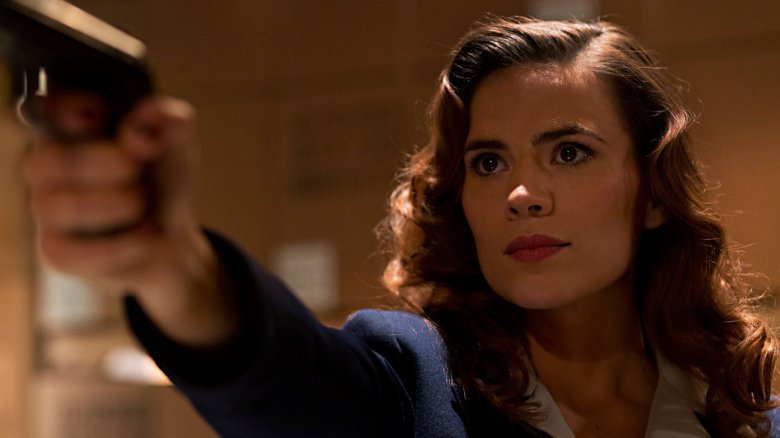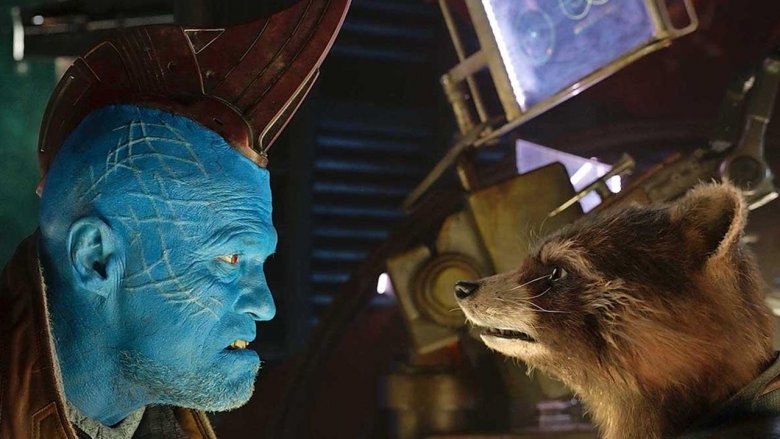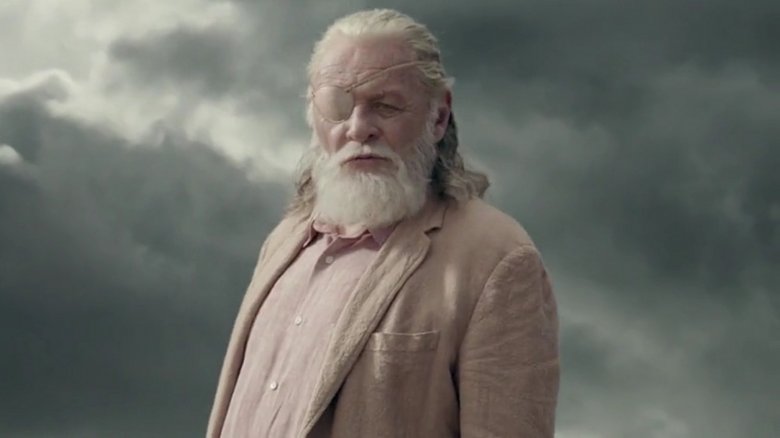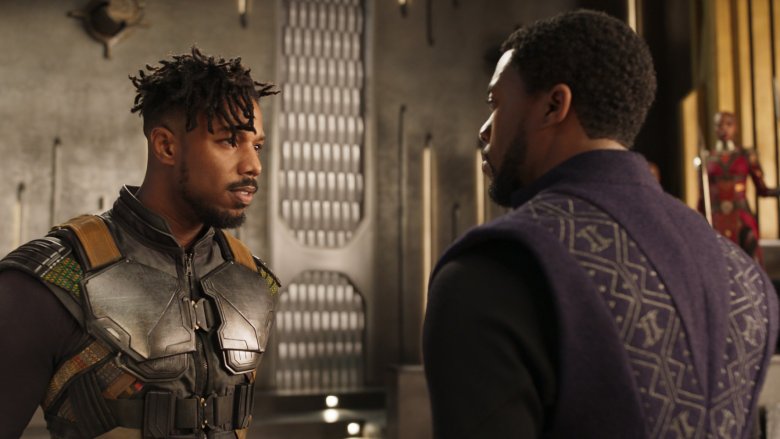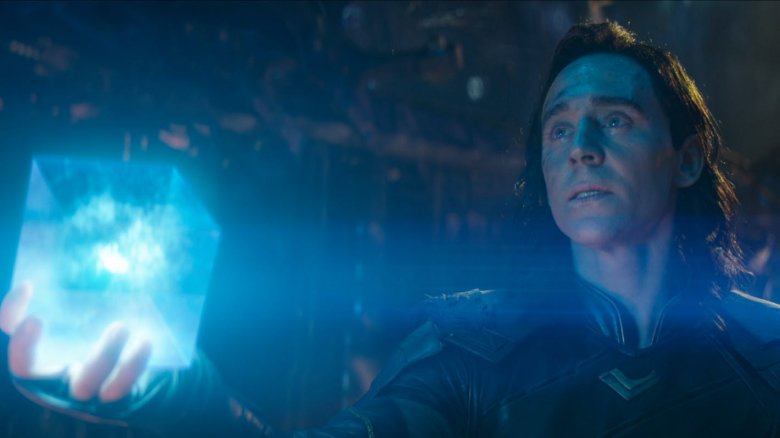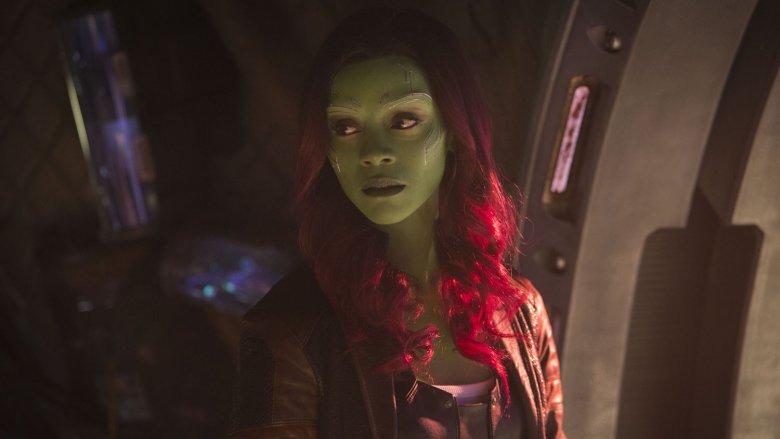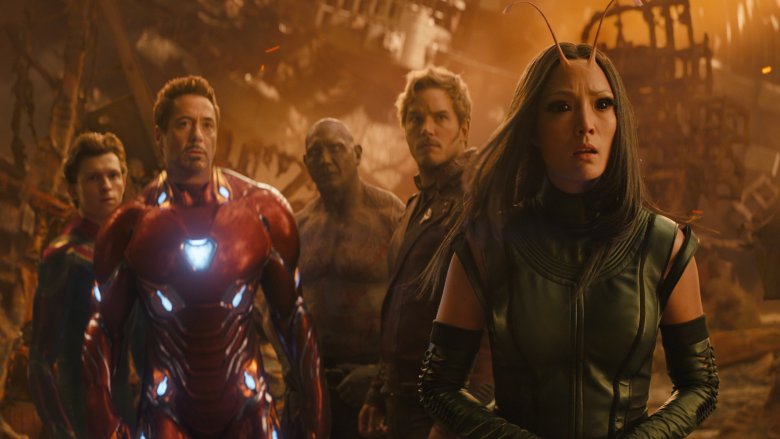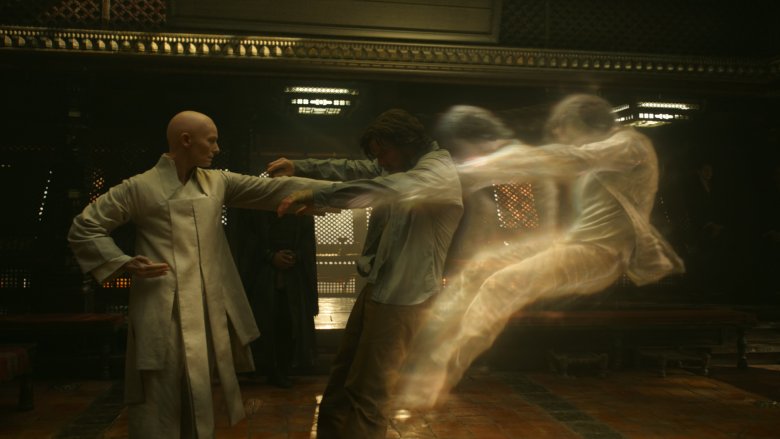Everyone Dead In The MCU So Far
The Marvel Cinematic Universe is a place full of superhero joy, jokes, and general comic book fun...most of the time. We're talking about a world full of people with extraordinary abilities, where the stakes are high and the fate of the universe often hangs in the balance. That means, unfortunately, that sometimes people have to die in the course of these stories, and the MCU has definitely made a point of killing off characters. Sometimes they're people we've barely had time to meet, sometimes they're villains who had it coming, and sometimes they're beloved heroes who leave us at the worst possible moment. Death might not come as often in the MCU as it does in other franchises (hello, Game of Thrones), but it's still hanging over everything.
In fact, death is such a force in the MCU at this point that you might have a bit of trouble keeping track of how many people we've lost, so we're here to help. Check out our roundup of every major hero and villain death in the MCU so far, beginning with 10 of the absolute biggest losses and continuing right down to a few you may have forgotten about.
SPOILERS AHEAD for virtually every Marvel Cinematic Universe movie and TV series
Obadiah Stane in Iron Man
Iron Man features a number of deaths, mostly soldiers and nameless terrorists, as well as Tony Stark's (Robert Downey Jr.) ally Yinsen (Shaun Toub). But the one that made the biggest impact on the overall MCU is that of Obadiah Stane (Jeff Bridges), Tony Stark's partner and mentor who went mad with power and turned into the destructive Iron Monger by the end of the film. Stane's arc as a villain isn't particularly shocking or game-changing — he's a corporate power player who decided Tony wasn't necessary anymore and tried to get rid of him. What makes him particularly notable is that he dies at the end of Iron Man, falling into the giant arc reactor at Stark headquarters so he can never return for future sequels. This set a precedent that many other Marvel films have stuck to. Heroes don't often die, but villains are easier to dispose of outright than throw in jail.
Kilgrave in Jessica Jones
Marvel's family of Netflix original series don't necessarily have a higher percentage of major character deaths than their film counterparts, but they do often traffic in darker, more mature themes, and nowhere is that more evident than the Kilgrave saga in the first season of Jessica Jones. A man with the extremely potent power to control minds, Kilgrave (David Tennant) uses his gift to turn people into his "servants," making them do everything from kill themselves to kill other people. When we meet Jessica (Krysten Ritter), she's one of his past victims; she was convinced by Kilgrave's powers to be his super-strong girlfriend before she was finally able to escape his hold. Jessica spends much of the season trying to either contain, capture, or even redeem Kilgrave, but as the season goes on — and the issues of consent, trauma, and misogynistic terror keep hitting her hard — she eventually reaches a breaking point and snaps his neck. It's one of the most powerful deaths Marvel has given us, it has massive ramifications for Jessica Jones season 2 as well as the Netflix shows as a whole, and it reminds us that some villains don't have to be world-conquering behemoths to be monsters who must be put down.
Quicksilver in Avengers: Age of Ultron
Until quite recently, if you were one of the major heroes on the poster of a Marvel Studios movie, odds are you were pretty safe. We don't watch Iron Man movies to see if Iron Man's going to live or die, after all. That all changed in Avengers: Age of Ultron, the 2015 sequel to The Avengers which expanded the team — and dealt it its first superheroic loss. The movie was billed, among other things, as the introduction of new heroes Vision (Paul Bettany), Scarlet Witch (Elizabeth Olsen), and Quicksilver (Aaron Taylor-Johnson). Scarlet Witch and Quicksilver are siblings — and often a package deal in the comics — so it was particularly surprising when Quicksilver died during Age of Ultron, taking a bullet to save Hawkeye and a civilian before collapsing. It's made all the more shocking when you realize that there's no struggle to stay alive, no fight for resurrection, and no last-ditch effort to save him. He's just...gone.
Ultron in Avengers: Age of Ultron
In the first Avengers film, Earth's Mightiest Heroes fought an alien invasion of Earth, and while they certainly killed many Chitauri warriors during the Battle of New York, the real driving force behind the attack was Loki (Tom Hiddleston). Because, in his eternal cleverness, he opted for surrender rather than dying in the fight, and because he's Thor's brother, Loki was spared death at the end of the film, and instead went on to play a role in more MCU movies. That meant that, at least for their first adventure, The Avengers didn't have to kill a supervillain. That changed with Age of Ultron, which introduced the titular killer superbot voiced by James Spader. Loki wanted to rule humanity, but Ultron wanted to end it, believing us to be a flawed species destined to destroy ourselves anyway. That meant he wouldn't stop unless he was wiped out entirely, and that's exactly what the Avengers ended up doing, marking their first major MCU supervillain kill that we know of.
Peggy Carter in Captain America: Civil War
Peggy Carter (Hayley Atwell) is a bit of an anomaly in the MCU — she was fortunate enough to be a human who, without superpowers or special suits of flying armor, became an extraordinary hero and lived a long, healthy life before finally dying during Captain America: Civil War. Her death had a major impact for several reasons, and not just because she was the only remaining shred of his past life that Captain America had before Bucky Barnes got better. For one thing, she was simply a beloved character among fans. For another, she was one of the founding members of SHIELD, who influenced the MCU in countless ways, including many that we never got to see beyond her short-lived but acclaimed ABC television series. Perhaps most importantly, she made a difference without being a superhero. She just showed up, despite loss and changing times and countless compromises, and kept trying to make the world a better place for decades.
Yondu in Guardians of the Galaxy Vol. 2
Few Marvel Cinematic Universe characters can boast an arc quite like the one given to Yondu (Michael Rooker) in the first two Guardians of the Galaxy films. When we first meet him, he's an unrepentant outlaw, ruthless and hungry for profit, who constantly scolds and threatens Peter Quill (Chris Pratt) for trying to break with Yondu's Ravagers — a group they've been a part of together for years. In Guardians of the Galaxy Vol. 2, his decision to kidnap Peter as a child has cost him, leaving him exiled from the larger Ravager community and searching for a new meaning in his life. By the end of that film, he's a hero who's found there's more to life than stealing, but he's also more than that: He's Peter Quill's adoptive father, who was there for him when Peter's real father was not, and who would rather die than let his boy see harm. Yondu's funeral sequence at the end of the film is one of the most heartwarming moments in the entire MCU, and his story is a reminder that in the end, some measure of redemption is possible for anyone who seeks it.
Odin in Thor: Ragnarok
It's well-established in the MCU that the Asgardian gods can die. They're not immortal, they just have impossibly long lifespans compared to humans, and though it's difficult, they can indeed be killed. Odin's death, though, does not come as the result of some violent confrontation, like the death of his wife Frigga in Thor: The Dark World. Instead, stripped of his power and resolute in maintaining his exile on Earth, Odin essentially chooses to let himself die, giving old age power over him at last, just before the arrival of his exiled daughter Hela. It's a major death in the MCU not because of shock value, but because Odin was one of the most powerful beings in existence before his demise, and because his final scene is so powerful. His decree to Thor that "Asgard is not a place," but wherever the Asgardian people stand, is a reminder for the God of Thunder that he can still lead his people — a reminder that sends the Odinson on a hero's journey that sprawls across multiple movies.
Killmonger in Black Panther
For many Marvel fans, MCU villainy doesn't get any better than Erik Killmonger (Michael B. Jordan) — not just because he's dangerous in a sexy way (though he is), but because he's a villain with a mission you can actually understand on a very human level. Sure, like so many other Marvel supervillains, what he's essentially out to get is power, but he wants it because he grew up feeling like he never had any. What's more, he grew up feeling like no one in his particular demographic had any power, and that any attempt on their part to struggle for more only got them pushed down again. So, while his plan to take over Wakanda and use its technology for world domination might be a little deranged, it's coming from a place of pain and injustice that many people around the world can relate to. That means his rise to power is much more human — and his eventual death, looking out over a Wakandan sunset, is that much more moving.
Loki in Avengers: Infinity War
Avengers: Infinity War has, by far, the highest body count of any film in the MCU, but for some fans the deaths never get more shocking than the first scene, when Thanos (Josh Brolin) chokes the life out of Loki (Tom Hiddleston), putting an end to the MCU's most prolific villain/antihero/trickster seemingly once and for all with the declaration "No resurrections this time." Loki had, as far as Thor was concerned, already died once at the end of Thor: The Dark World, so it felt odd to think that the God of Mischief could ever really be taken out. For all we know, maybe there is still hope of resurrection. The brutal way in which we lost Loki, though, suggests that Thanos meant what he said, and that even if the events of Infinity War are at least partially reversed by its sequel, Loki may be one of the characters who's gone for good after a very eventful run in the MCU.
Gamora in Avengers: Infinity War
Just when you thought Loki finally losing his life would be among the most shocking things to happen in Avengers: Infinity War, the film upped the stakes and killed an established member of one of its two superhero teams before the film's climactic moments. It's well established by the first Guardians of the Galaxy film that Gamora (Zoe Saldana) was a "daughter" of Thanos, and longed to escape his manipulative, abusive clutches. This is explored in much greater detail in Infinity War, including the revelation that, while Gamora sees him as a monster, Thanos truly loved her and wanted her to eventually come around to his way of thinking. This culminates in the moment when Thanos sacrifices her, throwing her off a cliff to her death in order to obtain the Soul Stone. It's an emotional moment that adds greater depth to Thanos, and Gamora's death continues to echo throughout the rest of the film, particularly in the moment when Peter's rage overcomes his reason, and he ruins the plan to get the Infinity Gauntlet off Thanos' hand.
The Infinity War massacre
No discussion of death in the MCU could possibly be complete without a look back at the final minutes of Avengers: Infinity War, and the chaos and heartbreak that ensues when Thanos finally snaps his fingers, wiping out half of all life in the universe and thus, a big chunk of our surviving heroes. He'd already taken Loki and Gamora from us, and had just seconds earlier ripped the life out of Vision in order to get the Mind Stone. With the snap, a kind of hush fell over everything, and the hero body count piled up. Ready to relive this? We lost: Spider-Man, Doctor Strange, Star-Lord, Drax, Mantis, Groot, Black Panther, Bucky Barnes, Scarlet Witch, Falcon, Nick Fury, and Maria Hill. Plus, when Ant-Man and the Wasp rolled around, we found out the snap also claimed Hank Pym, Janet van Dyne, and Hope van Dyne. It's important to note that a good many of these losses likely have asterisks next to them, particularly since characters like Spider-Man and Black Panther have sequels to lead soon, but as it happened it all felt very real — and very devastating.
All the rest
We've talked about a lot of deaths, and while we've covered many of the biggies, that's just the tip of a very big superhero universe iceberg, so let's take a moment to remember all the other major Marvel heroes and villains we've lost so far. Take a deep breath. On the villain side, there's Whiplash, Arnim Zola, the Other, Aldrich Killian, Malekith, Alexander Pierce, Ronan the Accuser, Baron Von Strucker, Yellowjacket, Kaecilius, Crossbones, Ego, Hela, Klaue, and all four members of the Children of Thanos. On the heroes side, there's Frigga, the Warriors Three, Howard and Maria Stark, King T'Chaka, Heimdall, Zuri, Skurge (a hero in the end), and the Ancient One. Then there are the numerous deaths we've seen on the TV side of the aisle, including Grant Ward, Leo Fitz, Cottonmouth, Black Mariah, Elektra (twice), Alexandra, Harold Meachum, Alisa Jones, and Stick. Even then, that's only scratching the surface of supporting heroes, villains, and other side characters who've lost their lives along the way. No matter how safe and bright the MCU might seem at times, death is still always looming, waiting to shock audiences and characters alike. Unless you're Thor, that is. At this point, that guy seems basically unkillable.
